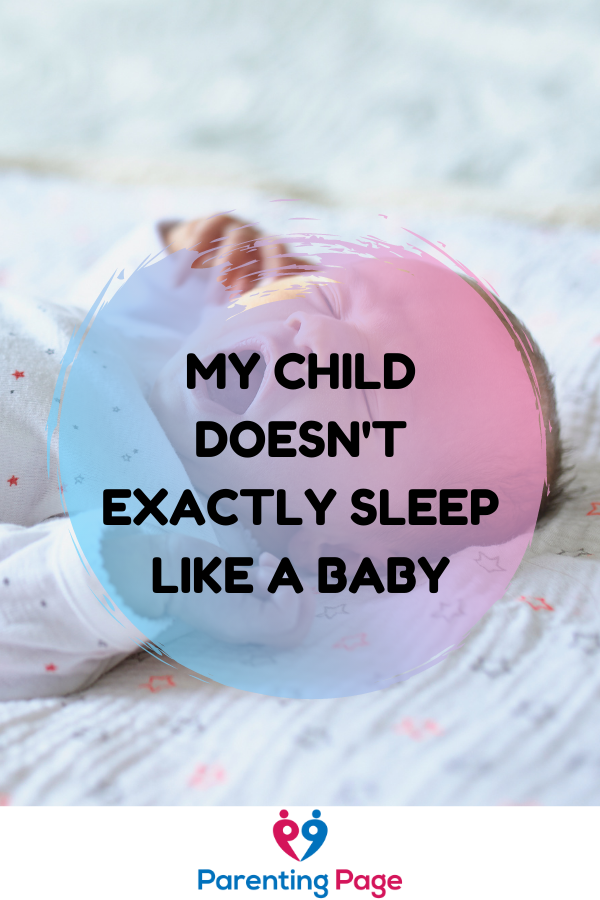Table of Contents
My child doesn’t exactly sleep like a baby. He’s constantly flailing. Is there something wrong?
How can I help my little one to sleep better?
Newborns have developmental periods which they go through when they are sleeping. During the first weeks, they need plenty of sleep to adapt and get strong in their new outside world environment. It is normal for a newborn to spend the majority of their time sleeping, waking every three hours or so for a feed and back to dreamland again.
As they get older, they start to develop day and night preferences, just like adults do. This will see them sleeping for longer and longer periods overnight and be more alert and active during the day (as well as some long daytime naps).
There is no need to darken the room and draw the blinds for a new baby’s nap time. They will sleep soundly, even if it’s not the dim and quiet of the night. Leaving the blind open when your baby is sleeping will help them recognise day and night.
All you need to do is be patient with your child. As much as possible, keep the day bright and lively and keep the night dark and quiet and your child will recognize the balance between them all on their own.
My baby is jolting in his sleep, is he okay?
Babies spend a lot longer in REM than adults do. They are most likely dreaming and their arms and legs will respond to the central nervous system. Unlike deep stages of sleep where we are unable to move and twist, the more shallow REM sleep cycles might result in your baby flapping their hands, starting or jolting. Most of the time the sudden movements won’t wake them but if they do jolt themselves awake, simply soothe them back to sleep. If a baby is startled they will jolt and throw up their hands, a leftover instinct from days when the mother might need to run from a predator and the baby needs to hold on tight and quickly to survive.
Parents may also notice a baby kicking or stretching its legs. This activity develops their leg muscles and prepares them to start rolling over, which normally occurs during four to six months of age. However, be cautious, some babies well below four months are able to roll so it’s important not to leave them unattended, especially on a bed, crib or change table.
My baby is scratching herself. How can I stop it?
Babies have no control over their movements for the first few months.
Unfortunately, this coincides with extremely fast fingernail growth which will need careful and regular trimming (almost daily) so they don’t scratch themselves while their arms flap. This can be a scary challenge for new parents as the baby’s fingers are so tiny and the clippers, even baby safe ones, are sharp. You can also opt for little bootie covers for hands although most babies are apt at losing these with their jolty arm movements. Many baby clothes come with hand covers that can be folded down when not needed. You can also swaddle your baby to help reduce flailing and keep them snug while sleeping.
At around three months old, a baby begins to have the strength and coordination to open their hands and gradually gain control over his movements. Until then you are likely to see wild flapping and flailing. This is very normal and appropriate and will help them gradually build strength and control.
It will be some time before a baby can recognise the hand is theirs and they can command it. When they figure that out you might find your baby staring at the hand in wonder.
My baby doesn’t seem very strong, are they ill?
Babies are both mighty and frail at the same time. Their vice-like grip around your finger might have you thinking you have a little Hercules on your hands, but don’t let this fool you. Babies are typically born without any muscle strength so they are not able to do things like a lift or turn their head or support the weight of their head (baby heads are huge and heavy compared to their little bodies) so absolute care must be taken when picking them up, holding and carrying them as they can’t support themselves protect themselves from harm.
While babies get a lot of practice moving and flexing in the womb, they are suspended in liquid so they are not used to the heavy gravity of the outside world (or the brightness or immense space or the quiet). It’s a lot to get used to.
As your baby grows you can help by giving them supervised tummy-time will help them develop the muscles they need for lifting and pushing themselves up. Most babies don’t like tummy time but having it in your daily routine, even if it’s just for 5 minutes at a time morning and afternoon, will be wonderful for helping their upper body strength.
My baby slept perfectly until four months old, now he’s awake at night. Did I do something wrong?
Ah yes, the old four-month sleep regression. This is a period that many parents find their once happy sleeper alert and ready for fun at midnight.
At four months your baby will start feeding less frequently (they can start taking longer breaks between their feeds), and they will be more aware and curious about their environment.
It is also a period when a child’s sleep routine is shifting and they may wake up for their night feed and refuse to go back to sleep.
This probably doesn’t have anything to do with sleep issues. Your little one is simply growing wiser, their senses are sharper, their vision is almost fully developed and they also have a strong connection with you; their safe and amazing place in your arms. They want to be with you and look around.
You can help by feeding them in the dark, or with a low nightlight, so they are not too aroused and give them some kisses and cuddles and whispered stories or little songs to fill them up for more sleep. It won’t take long for them to drift off again, in the meantime, enjoy the blissful time you have to share with your little one. Keep things quiet and calm. To make this more enjoyable nap in the day (when they do) so you have a bit more energy to spend with them at night.
Frequent hand flapping in older children
Hand flapping is a normal part of childhood development and it can lessen or stop permanently as your child gets older, however, it might not stop. In some cases it can be a sign of autism, however, hand flapping alone is not a strong enough indication and further tests will need to be done to identify anything more serious.
While there is medically nothing wrong with constant hand flapping in older children, there is a social stigma that it’s “not okay” and frowned upon. How these rules were made is hard to understand, when something like nail-biting is socially acceptable, and hand flapping is not. Both are essentially the same, only over time, one has become what we call STIMS, a behaviour that is not culturally acceptable.
If your child’s hand flapping causes complications in school or your child is constantly getting negative attention based on their behaviour, maybe it is best to consider intervention, however, do so gently, they are not acting out or being deliberately uncooperative.
You should read these Top 20 Common and Normal New Baby Questions to better prepare for your little one.


